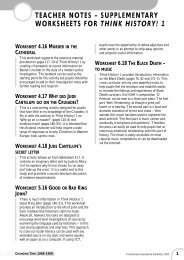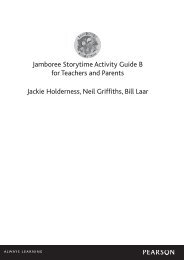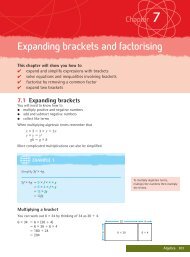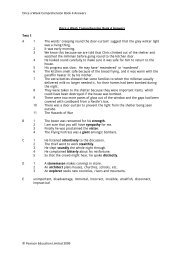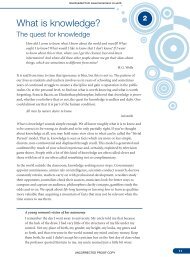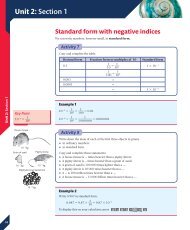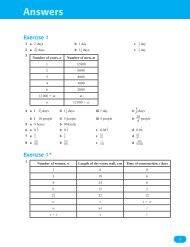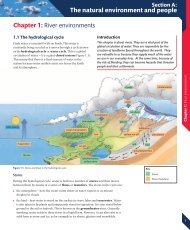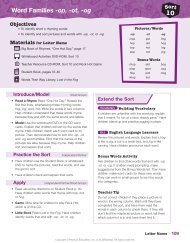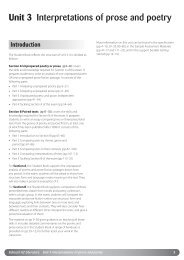2 Mechanics - Pearson Global Schools
2 Mechanics - Pearson Global Schools
2 Mechanics - Pearson Global Schools
- No tags were found...
You also want an ePaper? Increase the reach of your titles
YUMPU automatically turns print PDFs into web optimized ePapers that Google loves.
2 This time the body loses PE and gains KE so applying the law of conservationof energy:Soloss of PE gain of KEmgh 1_ 2 mv2v √ ___2gh √ ___________(2 10 5) 10 m s 1Again, this is a much simpler way of getting the answer than using componentsof the forces.ExercisesUse the law of conservation of energy to solve the following:40 A stone of mass 500 g is thrown off the top of a cliff with a speed of 5 m s 1 . If the cliff is 50 mhigh, what is its speed just before it hits the ground?41 A ball of mass 250 g is dropped 5 m onto a springas shown in Figure 2.79.(a) How much KE will the ball have when it hitsthe spring?(b) How much work will be done as the spring iscompressed?(c) If the spring constant is 250 kN m 1 , calculatehow far the spring will be compressed.5 mFigure 2.79 In this example thespring is compressed, not stretched,but Hooke’s law still applies.h42 A ball of mass 100 g is hit vertically upwards with a bat. The bat exerts a constant force of 15 N onthe ball and is in contact with it for a distance of 5 cm.(a) How much work does the bat do on the ball?(b) How high will the ball go?43 A child pushes a toy car of mass 200 g up a slope. The car has a speed of 2 m s 1 at the bottom ofthe slope.(a) How high up the slope will the car go?(b) If the speed of the car were doubled how high would it go now?Forms of energyWhen we are describing the motion of simple red balls there are only two forms ofenergy, KE and PE. However, when we start to look at more complicated systems,we discover that we can do work using a variety of different machines, such aspetrol engine, electric engine etc. To do work, these machines must be givenenergy and this can come in many forms, for example:• Petrol• Solar• Gas• Nuclear• ElectricityAs you learn more about the nature of matter in Chapter 3, you will discover thatall of these (except solar) are related to either KE or PE of particles.53



